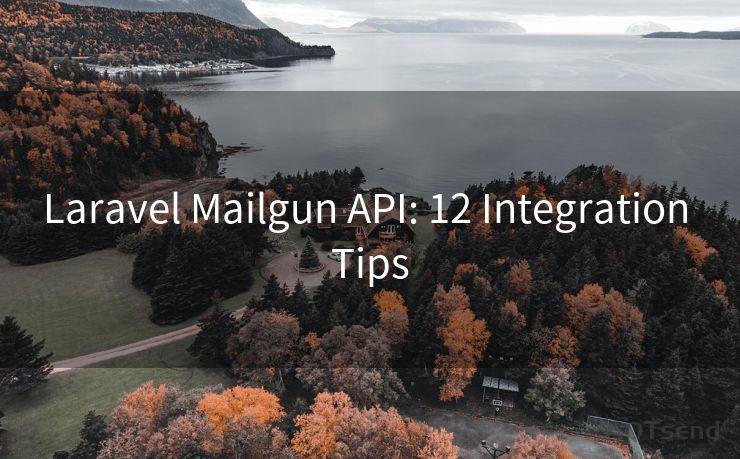Laravel Mailgun API: 12 Integration Tips




When integrating the Mailgun API with Laravel, there are several key tips and best practices to ensure a smooth and efficient integration. In this article, we'll explore 12 essential tips to help you make the most of your Laravel and Mailgun integration.
1. Set Up Your Mailgun Account Correctly
Before integrating Mailgun with Laravel, ensure your Mailgun account is properly set up. Verify your domain and configure your SMTP credentials. This is crucial for secure and reliable email delivery.
2. Utilize Laravel's Mailgun Driver
Laravel provides a built-in Mailgun driver for its mailing system. Make sure to configure your .env file with the correct Mailgun domain and API key to utilize this driver effectively.
3. Handle Exceptions Gracefully
When sending emails, always be prepared to handle exceptions. Laravel's exception handling mechanisms, combined with Mailgun's API responses, can help you manage failures gracefully.
4. Validate Email Addresses
Before sending emails, validate the recipient's email address. Laravel provides validation rules that you can use to ensure email addresses are formatted correctly.
5. Optimize Email Content
Craft your email content carefully. Use responsive templates that render well on different devices, and keep the message clear and concise.
🔔🔔🔔
【AOTsend Email API】:AOTsend is a Managed Email Service for sending transactional emails. Support Email Types: reminders, authentication, confirmations, notifications, verification codes, invoices, password resets, account activations, billing statements, two-factor authentication (2FA), and one-time passwords (OTP) emails, etc. $0.28 per 1000 Emails. 99% Delivery, 98% Inbox Rate.
You might be interested in:
Why did we start the AOTsend project, Brand Story?
What is a Managed Email API, How it Works?
Best 25+ Email Marketing Platforms (Authority,Keywords&Traffic Comparison)
Best 24+ Email Marketing Service (Price, Pros&Cons Comparison)
Email APIs vs SMTP: How they Works, Any Difference?
6. Test in a Sandbox Environment

Set up a sandbox environment to test your email integrations before deploying to production. Mailgun offers a sandbox domain for testing purposes.
7. Monitor Email Delivery
Keep track of your email delivery rates and engagement metrics using Mailgun's analytics and tracking features. This helps you identify and fix any issues promptly.
8. Implement Webhooks for Real-Time Updates
Utilize Mailgun's webhook functionality to receive real-time updates on email events like opens, clicks, bounces, and complaints. This data is invaluable for optimizing your email campaigns.
9. Secure Your API Keys
Protect your Mailgun API keys. Never hardcode them into your application, and ensure they are stored securely, such as in Laravel's encrypted .env file.
10. Use Tags and Custom Data
Take advantage of Mailgun's tagging feature to categorize your emails. This helps with segmentation and targeting in future campaigns.
11. Handle Unsubscribes
Respect user preferences by implementing an unsubscribe mechanism. Mailgun supports unsubscribe handling, making it easy to manage user subscriptions.
12. Stay Updated on Mailgun Changes
Keep up to date with Mailgun's API changes and best practices. This ensures your integration remains efficient and secure over time.
By following these Laravel Mailgun API integration tips, you can ensure a smooth and effective email communication strategy for your application. Remember to always prioritize user experience, security, and compliance with best practices.




Scan the QR code to access on your mobile device.
Copyright notice: This article is published by AotSend. Reproduction requires attribution.
Article Link:https://www.mailwot.com/p1233.html



